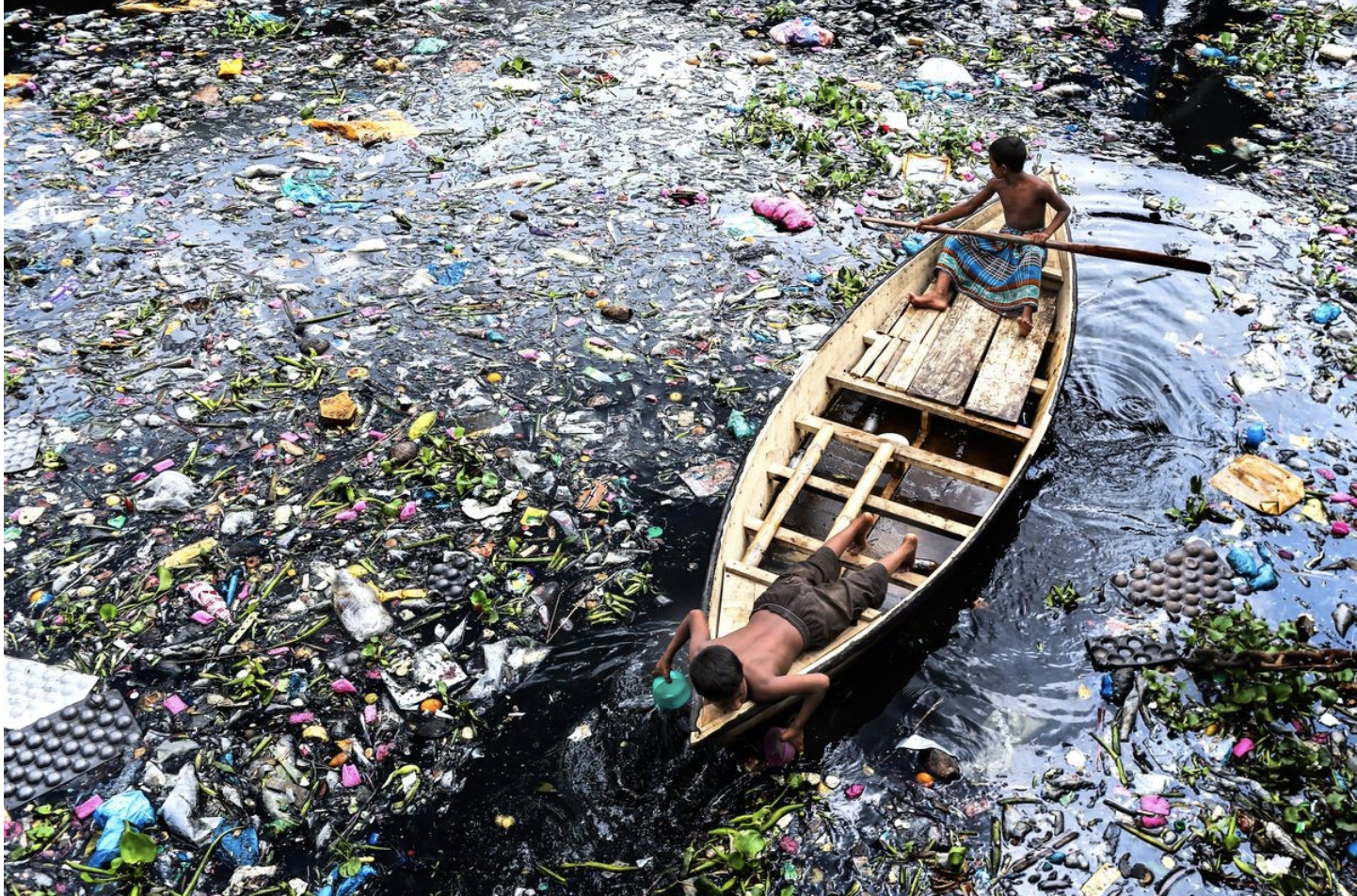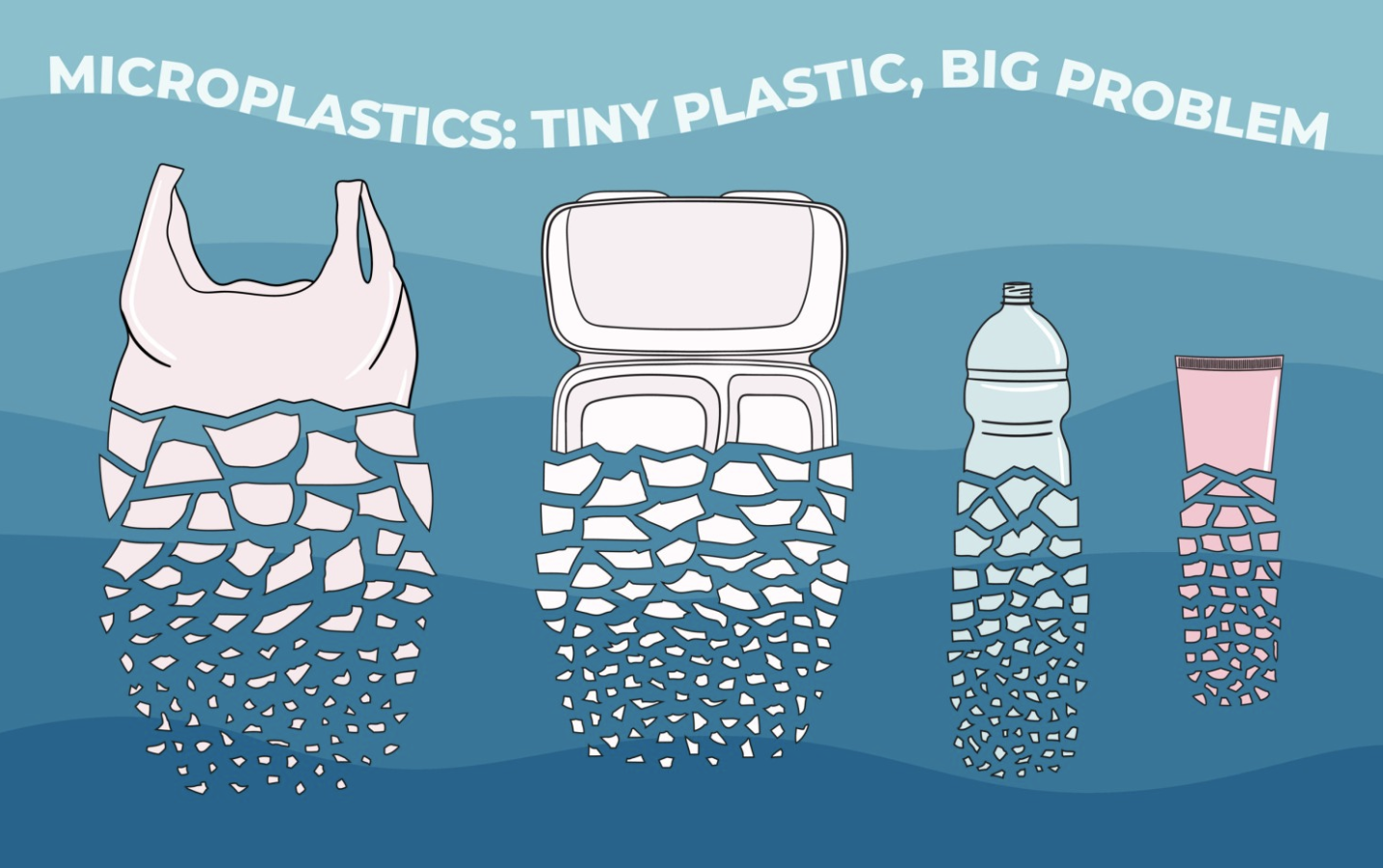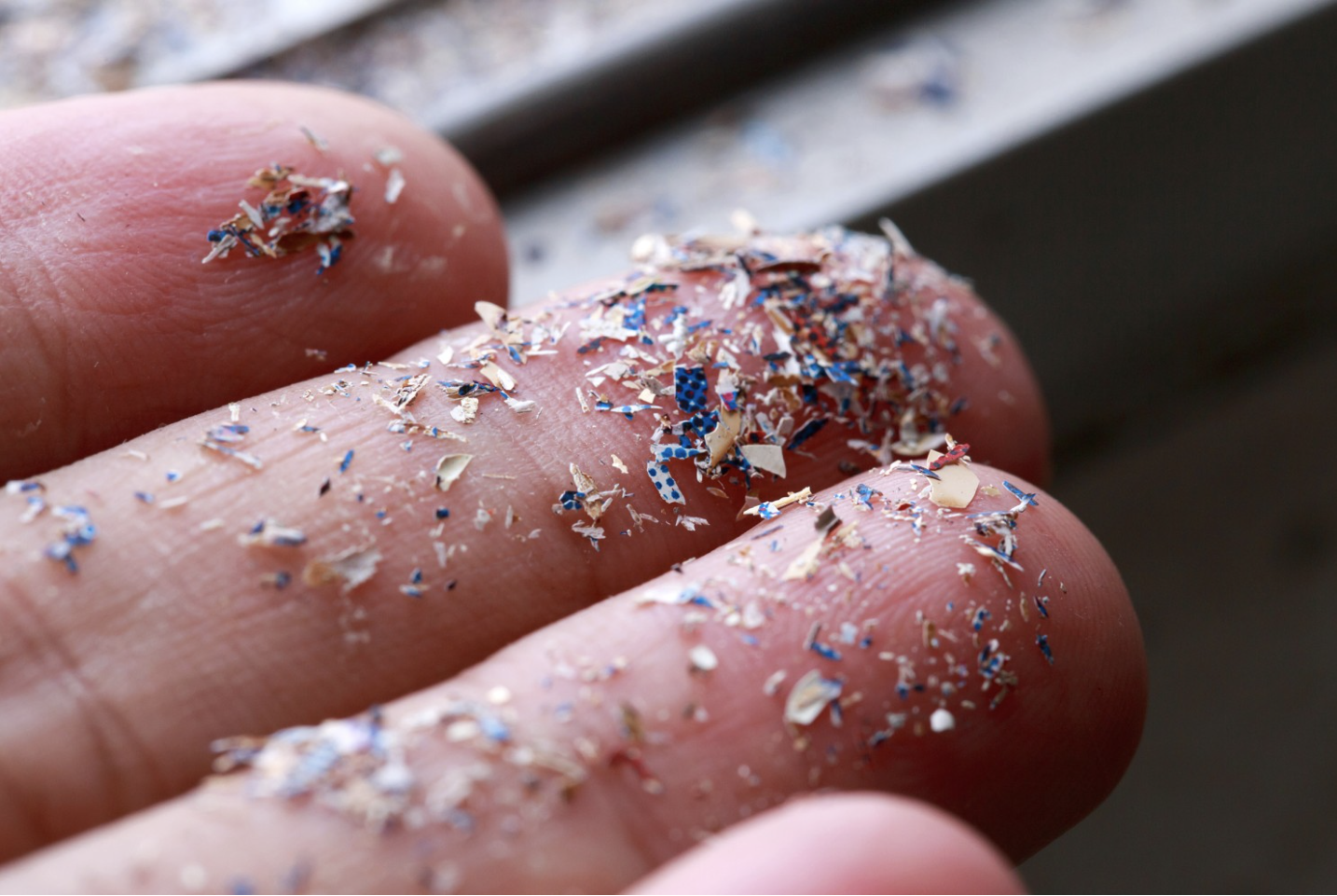
Introduction
Plastic pollution is a global environmental crisis that has far-reaching consequences for our planet, but its impact on our drinking water is a particularly alarming and pressing concern.
As we continue to produce and discard massive amounts of plastic waste, these materials find their way into our rivers, lakes, and oceans, ultimately contaminating the very water sources we rely on for sustenance.
This article explores the extent of plastic pollution in our drinking water, its consequences for human health, and the urgent need for action to address this crisis.

Our rivers, lakes, and oceans are contaminated with plastic. The image shows a polluted river in Bangladesh.
The Ubiquity of Plastic Pollution
Plastic pollution has become ubiquitous in our environment, from the deepest ocean trenches to the highest mountain peaks. It is estimated that over 380 million tons of plastic are produced annually, with a significant portion ending up as waste.
Plastics take hundreds of years to degrade, and many items break down into tiny particles known as microplastics, which are less than 5 millimeters in size. These microplastics can be carried by wind and water, infiltrating every corner of the planet.

Microplastics (less than 5 millimeters) cause serious health issues to us, our oceans, and wildlife.
We eat about five grams of microplastics every week. That’s equivalent to 250 grams a year.
Visualizing how much plastic we consume
Microplastics in Drinking Water
One of the most insidious consequences of plastic pollution is the presence of microplastics in our drinking water. Studies have shown microplastics have been found in tap water, bottled water, and even in remote natural water sources.
These sources of these microplastics are diverse, including the breakdown of larger plastic items, the shedding of microfibers from synthetic textiles, and the disintegration of microbeads used in personal care products.

Can you imagine drinking this?
The Health Implications
The presence of microplastics in drinking water raises serious concerns for human health. While long-term effects are not yet fully understood, there is growing evidence that microplastics can have detrimental health impacts.
These tiny particles can absorb and accumulate toxic chemicals. When ingested, these microplastics may release these chemicals into the digestive system, potentially causing harm.
Microplastics can cause physical damage as they pass through the human body. Their small size allows them to penetrate tissues and organs, raising concerns about inflammation and tissue damage. Some studies have also suggested that microplastics could disrupt the gut microbiome, which is crucial to human health.
Beyond the direct health effects, there is also a psychological effect associated with the awareness of plastic pollution in our drinking water. People are understandably worried about the safety of the water they consume daily, and this anxiety can impact mental well-being.

We are constantly eating plastic
The Environmental Toll
Plastic pollution in drinking water not only affects human health but also has a broader ecological impact. Aquatic ecosystems suffer accumulate in rivers, lakes, and oceans.
Marine life, from small fish to large whales, can ingest or become entangled in plastic debris, leading to injuries and death. Moreover, as plastics break down into smaller pieces, they enter the food chain, potentially harming species all the way up to apex predators, including humans.

A juvenile green sea turtle was found with a stomach full of plastic.
Mitigating the Crisis
Addressing plastic pollution in drinking water requires a multifaceted approach. First, there must be a concerted effort to reduce plastic production and consumption.
Governments, industries, and individuals must take steps to minimize plastic waste, such as adopting reusable products, promoting recycling, and phasing out single-use plastics.

The amount of years it takes for single-use plastic items to degrade.
Water treatment facilities also play a crucial role in removing microplastics from drinking water. Improved filtration systems and the development of advanced treatment technologies are essential to minimize the presence of microplastics in our water supply.
Public awareness and education are key components of any effective strategy. When individuals understand the consequences of plastic pollution and how they can contribute to its reduction, they are more likely to make sustainable choices in their daily lives.
One effective strategy for mitigating plastic pollution is to adopt the Happy Turtle Straw, a solution that guarantees 100% safety for the environment, wildlife, and human health. By choosing this eco-friendly alternative to plastic straws, you can significantly reduce your ecological footprint and contribute to a cleaner, healthier planet. – The Happy Turtle Straw team

Conclusion
Plastic pollution in our drinking water is a grave and growing threat to human health and the environment.
The ubiquity of microplastic in our water sources underscores the urgency of the problem. To protect our health and the planet, we must take immediate action to reduce plastic waste, improve water management methods, and educate the public about the dangers of plastic pollution.
Only through collective efforts can we hope to mitigate this crisis and secure a safer and healthier future for ourselves and future generations.
References
Brande-Lavridsen, Nanna. “Microplastics in the Freshwater Environment.” University of Tennessee
NOAA. A Guide to Plastic in the Ocean. National Ocean Service website.
Mason, Sherri A., Victoria G. Welch, and Joseph Neratko. “Synthetic polymer contamination in bottled water.” Frontiers in chemistry (2018): 407.
Huang, Y., Wong, K.K., Li, W., Zhao, H., Wang, T., Stanescu, S., Boult, S., van Dongen, B., Mativenga, P. and Li, L., 2022. Characteristics of nano-plastics in bottled drinking water. Journal of Hazardous Materials, 424, p.127404.
Lin, P.Y., Wu, I.H., Tsai, C.Y., Kirankumar, R. and Hsieh, S., 2022. Detecting the release of plastic particles in packaged drinking water under simulated light irradiation using surface-enhanced Raman spectroscopy. Analytica Chimica Acta, 1198, p.339516.
The Happy Turtle Straw is dedicated to reducing plastic waste in our waterways and finding new innovative solutions to help our marine life, such as endangered sea turtles.




